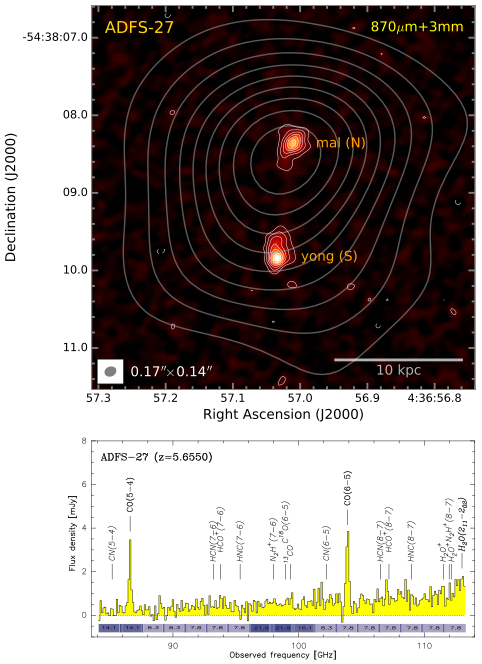Science Highlights - Detection of a z~6 Starburst Galaxy with the ALMA Spectral Scan Mode
|
|
The ALMA spectral scan mode offers the ability to pinpoint the redshift of luminous gas-rich galaxies at high redshift. In a recent study, Dominik Riechers and his collaborators made use of this mode to measure the redshift of an extremely red galaxy merger, and to derive several basic properties of the system. For extremely high-redshift dusty galaxies, the peak of their far-infrared spectral energy distribution is shifted to very long wavelengths, thus sampling the observer-frame emission from these galaxies with Herschel and ground-based bolometer arrays (APEX/LABOCA) in the 250-870 micron range yields increasing red energy distributions. The authors make use this fact to identify "870 micron risers" to observe with ALMA in 3mm spectral scan mode. They identify the source ADFS-27 as a z = 5.655 galaxy merger based on the identification of strong CO(5-4) and CO(6-5) emission (see lower left image). The source is observed to be a galaxy pair (see upper left image for ALMA 870 micron color scale map) with a molecular gas mass of 2.5x1011 Msun (assuming a molecular gas mass to CO luminosity conversion factor of 0.8 [K km/s pc2]-1). Given the infrared luminosity of the pair (2.4x1013 Lsun) and the extent of the 870 micron continuum emission, these galaxies have star formation rate surface densities of 730-750 Msun/yr/kpc2 - i.e., they are maximum starburst galaxies.
|

